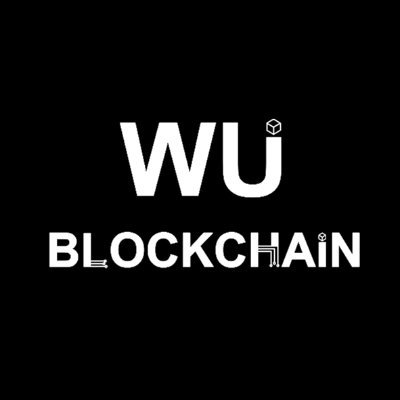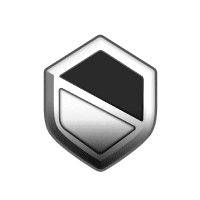


Prezzo di ZKsyncZK
Convertitore da ZK a EUR
Come ti senti oggi in merito a ZKsync?
A proposito di ZKsync (ZK)
Cos'è zkSync?
zkSync è una soluzione di scalabilità di Layer 2 su Ethereum, progettata per migliorare la capacità effettiva delle transazioni della rete e ridurre le commissioni di transazione, mantenendo i valori fondamentali di sicurezza e decentralizzazione. Sviluppata da Matter Labs, la tecnologia di rollup a conoscenza zero (zk-Rollup) di zkSync affronta le sfide di scalabilità di Ethereum.
Ethereum, la seconda blockchain più grande al mondo, ha dovuto affrontare problemi di scalabilità e commissioni di transazione elevate, in particolare nei periodi di alta attività della rete. zkSync intende risolvere questi problemi aggregando più transazioni off-chain e inviando un'unica dimostrazione alla blockchain di Ethereum, riducendo significativamente il carico computazionale e i costi a esso associati. Di conseguenza, zkSync è uno sviluppo essenziale nel continuo sforzo per aumentare la scalabilità di Ethereum in modo efficace e sostenibile.
Risorse utili
Documenti ufficiali: https://docs.zksync.io/
Sito web ufficiale: https://zksync.io/
Come funziona zkSync?
Per migliorare l'efficienza della rete Ethereum, zkSync impiega la tecnologia zk-rollup. In sostanza, gli zk-rollup raggruppano centinaia di transazioni off-chain, creando una prova crittografica della loro validità. Questa prova viene poi sottoposta alla mainnet di Ethereum per la verifica. Poiché solo la prova deve essere verificata on-chain, il processo riduce significativamente il carico sulla rete Ethereum, portando a una riduzione delle commissioni sul gas e a transazioni più rapide.
Inoltre, zkSync è stato progettato per essere compatibile con EVM (Ethereum Virtual Machine). Ciò significa che gli sviluppatori possono implementare gli smart contract di Ethereum esistenti su zkSync senza dover riscriverne il codice. Questa compatibilità abbassa la barriera d'ingresso per gli sviluppatori e facilita una migrazione fluida delle applicazioni decentralizzate (dApp) su zkSync, promuovendo così una maggiore adozione di questa soluzione di scalabilità.
zkSync incorpora anche l'account abstraction nativo, che migliora l'esperienza utente consentendo interazioni più intuitive e facili da comprendere con la blockchain. Gli utenti possono automatizzare i pagamenti, pagare le commissioni sul gas con qualsiasi token o addirittura farle coprire da altre parti. Questa flessibilità è stata pensata per rendere la tecnologia blockchain accessibile a un pubblico più ampio, favorendo ulteriormente l'adozione di zkSync.
La sicurezza è un altro aspetto critico di zkSync. Per garantirne la solidità, il protocollo è sottoposto a verifiche approfondite e stress test. Ereditando la sicurezza della mainnet di Ethereum e aggiungendo ulteriori layer di protezione, zkSync fornisce un ambiente altamente sicuro per diverse applicazioni blockchain, in particolare quelle del settore della finanza decentralizzata (DeFi).
Cos'è il token ZK?
ZK è l'utility token nativo e il token di governance dell'ecosistema zkSync. Svolge un ruolo essenziale nel mantenere e migliorare le operazioni del protocollo. Uno dei suoi usi principali è quello di pagare le commissioni di transazione sulla rete zkSync. Utilizzare i token ZK per le commissioni garantisce costi inferiori rispetto alla rete principale di Ethereum.
Oltre alle commissioni di transazione, il token ZK è parte integrante del modello di governance decentralizzato di zkSync. I suoi holder possono partecipare ai processi decisionali più importanti, votando sulle proposte che influenzano la direzione futura del protocollo. Questo approccio democratico garantisce che lo sviluppo e l'evoluzione di zkSync riflettano gli interessi collettivi della sua community.
Inoltre, il token ZK incentiva la sicurezza e la partecipazione alla rete. Gli utenti possono mettere in staking i loro token ZK per supportare l'infrastruttura di sicurezza della rete, guadagnando ricompense sotto forma di ulteriori token. Inoltre, i fornitori di liquidità all'interno dell'ecosistema zkSync sono ricompensati con token ZK, assicurando un'ampia liquidità per gli exchange decentralizzati (DEX) e le altre attività finanziarie sulla piattaforma. ZK ha un’offerta totale pari a 21 miliardi di token.
zkSync è un buon investimento?
Investire in qualsiasi criptovaluta, compreso zkSync, richiede un'attenta valutazione e delle ricerche approfondite. La natura volatile del mercato crypto fa sì che i prezzi possano fluttuare in modo significativo in brevi periodi di tempo. Prima di effettuare un investimento, è di fondamentale importanza comprendere le dinamiche di mercato, valutare la propria tolleranza al rischio e considerare il potenziale di guadagno e di perdita. Tenersi aggiornati sulle tendenze del mercato e interagire con la community crypto può aiutare a determinare se zkSync è un buon investimento nel 2024.
Inoltre, la diversificazione è una strategia fondamentale per gestire il rischio d'investimento. Invece di mettere tutte le tue risorse in un unico asset, considera la possibilità di distribuire i tuoi investimenti su varie criptovalute o asset tradizionali. Questo approccio può contribuire a mitigare le potenziali perdite, oltre a costruire un portafoglio più equilibrato. Rimani sempre informato e preparati ad adeguare la tua strategia d'investimento seguendo i cambiamenti del mercato, assicurandoti che il tuo portafoglio rimanga solido e ben posizionato per il futuro.
Come acquistare zkSync (ZK)
Stai pensando di investire in zkSync (ZK)? In soli 2 minuti puoi creare un account su Bitget e iniziare a fare trading con ZK.
Articoli correlati su zkSync:
zkSync (ZK): scalare Ethereum con le dimostrazioni a conoscenza zero (zkP)
Rapporto di analisi IA su ZKsync
Prezzo di ZKsync di oggi in EUR
Storico dei prezzi di ZKsync (EUR)
 Prezzo più basso
Prezzo più basso Prezzo più alto
Prezzo più alto 
Qual è il prezzo più alto di ZKsync?
Qual è il prezzo più basso di ZKsync?
Previsione del prezzo di ZKsync
Quando è il momento giusto per acquistare ZK? Dovrei acquistare o vendere ZK ora?
Quale sarà il prezzo di ZK nel 2026?
Quale sarà il prezzo di ZK nel 2031?
FAQ
Quali fattori influenzano il prezzo di ZKsync?
ZKsync è un buon investimento?
In che modo la tecnologia ZKsync influisce sul suo prezzo?
Dove posso comprare ZKsync?
Qual è la previsione del prezzo futuro per ZKsync?
Come influisce la volatilità del mercato sul prezzo di ZKsync?
Quali sono i rischi coinvolti nel trading di ZKsync?
Come posso monitorare il prezzo di ZKsync in tempo reale?
Che ruolo hanno le partnership nel prezzo di ZKsync?
Come influisce l'ambiente normativo sul prezzo di ZKsync?
Qual è il prezzo attuale di ZKsync?
Qual è il volume di trading di 24 ore di ZKsync?
Qual è il massimo storico di ZKsync?
Posso acquistare ZKsync su Bitget?
Posso ottenere un guadagno costante investendo in ZKsync?
Dove posso acquistare ZKsync con la commissione più bassa?
Notizie su ZKsync
Aggiornamenti su ZKsync
zkLink (ZKL): il futuro delle applicazioni decentralizzate multi-chain
zkSync (ZK): scalare Ethereum con le dimostrazioni a conoscenza zero (zkP)
ZeroLend (ZERO): il più grande mercato dei prestiti per i token di liquid restaking
Dappad (APPA): semplificare gli investimenti sulla blockchain con la tecnologia dell’Account Abstarction
AutoAir AI (AAI): ricerca degli airdrop senza complicazioni
Syncus (SYNC): una sfida alle strutture finanziarie convenzionali
Aggiornamento Dencun di Ethereum: come influenzerà il mercato delle criptovalute
Guida all'uso di Bitget Swap
Comprendere i layer della blockchain
Holdstation: futures e futuro a portata di mano su zkSync Era
Mercato ZKsync
Saldo di ZKsync per concentrazione
Indirizzi ZKsync per durata dell'holding

Prezzi di ZKsync globali
- 1
- 2
- 3
- 4
- 5
Come acquistare ZKsync(ZK)

Crea il Tuo Conto Bitget Gratuito

Verifica il Tuo Conto

Converti ZKsync in ZK
Fai trading sui futures perpetui ZK
Dopo essersi registrati con successo su Bitget e aver acquistato i token USDT o ZK, puoi iniziare a fare trading sui derivati, compresi i futures ZK e il trading con margine, per aumentare i tuoi rendimenti.
Il prezzo attuale di ZK è €0.04423, con una variazione di prezzo in 24 ore di -7.47%. I trader possono trarre profitto sia andando long che short sui futures ZK.
Partecipa al copy trading di ZK seguendo i trader d’élite.
Nuovi listing su Bitget
Acquista di più
Dove posso acquistare ZKsync (ZK)?
Sezione video: verifica rapida e accesso rapido al trading

Convertitore da ZK a EUR
Risorse di ZK
Tag:
Valutazioni di ZKsync
Bitget Insights




Asset correlati
Informazioni aggiuntive su ZKsync
Panoramica della moneta
In relazione alle monete
In relazione al trading
Aggiornamenti delle monete
Trading
Earn
ZKJ/USDT
SpotZKJ/USDT
MargineZKJ/USDT
Futures USDT-M























.png)








